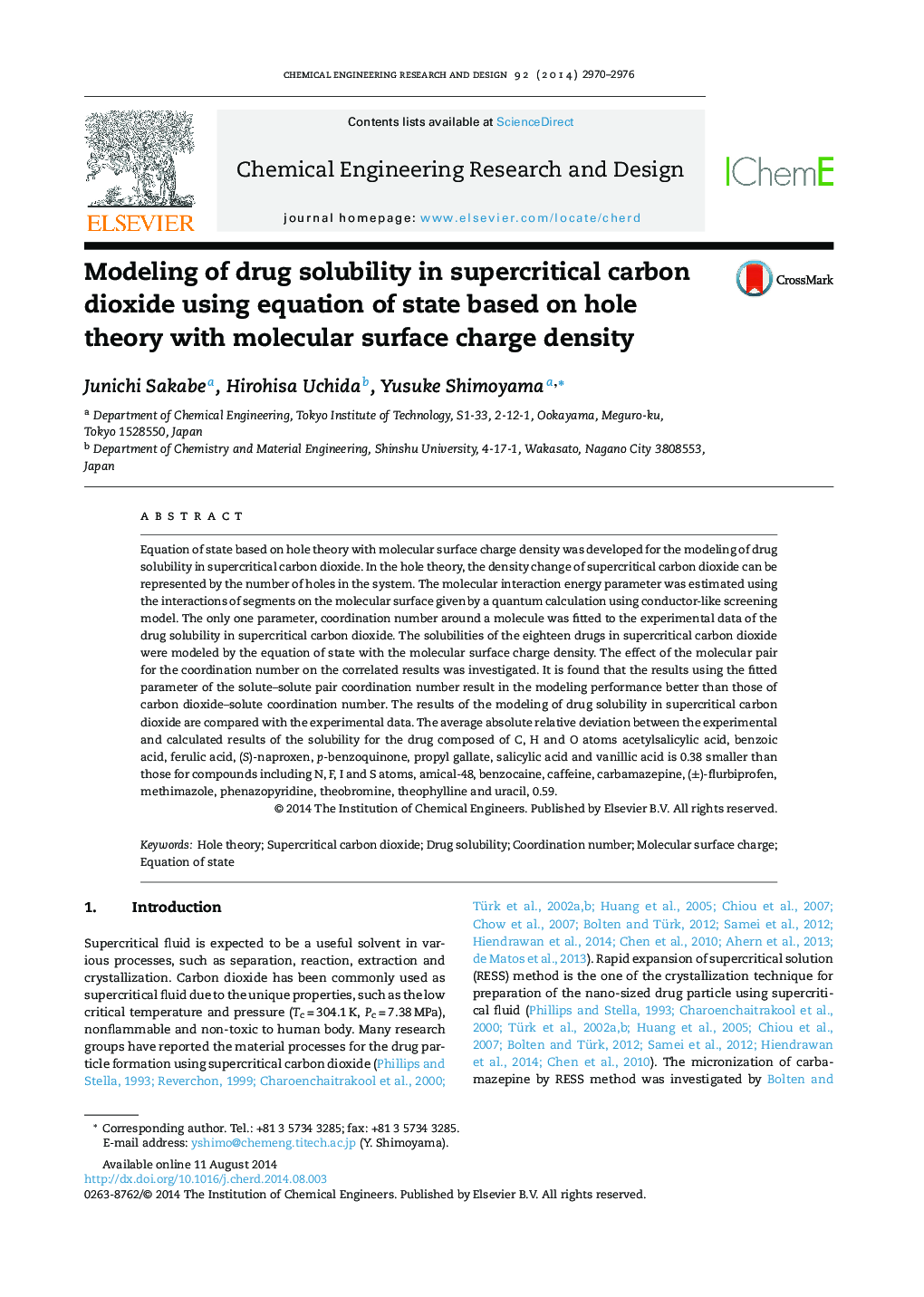| کد مقاله | کد نشریه | سال انتشار | مقاله انگلیسی | نسخه تمام متن |
|---|---|---|---|---|
| 620956 | 882524 | 2014 | 7 صفحه PDF | دانلود رایگان |
Equation of state based on hole theory with molecular surface charge density was developed for the modeling of drug solubility in supercritical carbon dioxide. In the hole theory, the density change of supercritical carbon dioxide can be represented by the number of holes in the system. The molecular interaction energy parameter was estimated using the interactions of segments on the molecular surface given by a quantum calculation using conductor-like screening model. The only one parameter, coordination number around a molecule was fitted to the experimental data of the drug solubility in supercritical carbon dioxide. The solubilities of the eighteen drugs in supercritical carbon dioxide were modeled by the equation of state with the molecular surface charge density. The effect of the molecular pair for the coordination number on the correlated results was investigated. It is found that the results using the fitted parameter of the solute–solute pair coordination number result in the modeling performance better than those of carbon dioxide–solute coordination number. The results of the modeling of drug solubility in supercritical carbon dioxide are compared with the experimental data. The average absolute relative deviation between the experimental and calculated results of the solubility for the drug composed of C, H and O atoms acetylsalicylic acid, benzoic acid, ferulic acid, (S)-naproxen, p-benzoquinone, propyl gallate, salicylic acid and vanillic acid is 0.38 smaller than those for compounds including N, F, I and S atoms, amical-48, benzocaine, caffeine, carbamazepine, (±)-flurbiprofen, methimazole, phenazopyridine, theobromine, theophylline and uracil, 0.59.
Journal: Chemical Engineering Research and Design - Volume 92, Issue 12, December 2014, Pages 2970–2976
